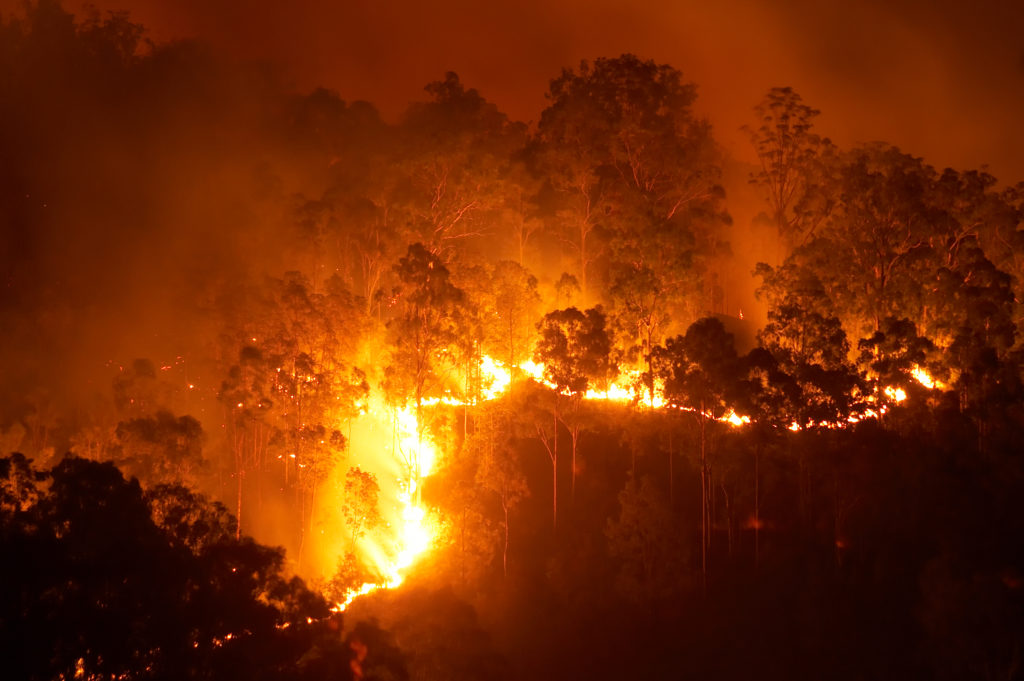BMP Essentials: Protecting Your Home Against Bushfire Risks
The Significance of Bushfire Administration in Fire Protection
In the realm of fire security, the value of effective bushfire management can not be understated. As areas globally come to grips with boosting circumstances of wildfires, the positive technique to avoiding and alleviating these natural calamities via calculated bushfire management strategies has actually become an essential element. Beyond the instant threat to human life and property, the interaction between bushfire management and eco-friendly preservation, community involvement, and climate change positions intricate difficulties that demand thorough services.
Importance of Proactive Bushfire Avoidance
Aggressive bushfire prevention approaches are vital in minimizing the devastating influences of wildfires on communities and communities. One crucial element of proactive bushfire prevention is fuel monitoring.
Educating the public on fire safety and security practices and advertising neighborhood understanding about the relevance of bushfire prevention are vital parts of positive techniques. Inevitably, positive bushfire prevention plays a significant duty in safeguarding areas and ecological communities from the harmful impacts of wildfires.
Duty of Neighborhood Engagement in Fire Defense
Involving the area in fire security efforts is important to boosting the efficiency of positive bushfire avoidance methods. Community interaction plays a crucial role in cultivating a collective understanding of the risks presented by bushfires and the significance of readiness actions. By including neighborhood homeowners, authorities can share important information ablaze safety and security techniques, discharge treatments, and early warning systems, equipping people to take positive steps to secure their lives and residential properties.
By promoting a society of preparedness and cooperation, communities can reinforce their capability to respond efficiently to bushfire emergency situations, minimizing the impact on lives and residential properties. Inevitably, neighborhood involvement is a keystone of detailed fire security methods, highlighting the relevance of collective action in safeguarding susceptible areas from the danger of bushfires.
Importance of Wild Animals Preservation in Bushfire Management
Preservation of wild animals plays an important duty in effective bushfire administration strategies, making certain the protection of diverse environments and biodiversity in fire-prone regions. Wildlife preservation is crucial as it adds to the total resilience of environments, aiding in their ability to recuperate and hold up against from the impact of bushfires. By conserving environments and protecting numerous types, the all-natural equilibrium within these ecosystems is preserved, which is important for their long-lasting health and sustainability.
Moreover, wild animals preservation additionally helps in minimizing the risk and intensity of bushfires. Healthy ecological communities with unspoiled wildlife populations can work as natural firebreaks, reducing the spread of fires and restricting their damaging possibility (BMP). Certain pet species, like delving animals or birds that spread out seeds, play one-of-a-kind roles in preventing fires or aiding in the post-fire regeneration of habitats
Incorporating wildlife preservation into bushfire management methods is not just crucial for protecting biodiversity however also for promoting the overall wellness and durability of ecological communities despite boosting fire threats.
Advantages of Strategic Fuel Decrease Programs
Strategically executing gas decrease programs is essential in alleviating the danger and influence web link of bushfires in fire-prone areas. These programs involve regulated burning, mechanical clearing up, and other approaches to lower the quantity of combustible plant life readily available to fuel wildfires. By purposefully decreasing fuel lots in crucial locations, such as close to domestic neighborhoods or vital infrastructure, the strength and spread of bushfires can be substantially decreased.
Among the main advantages of fuel decrease programs is the enhancement of total fire durability in a community. By creating calculated fuel breaks and lowering the connection of greenery, these programs help to disrupt the course of a bushfire, making it simpler for firemans to include and snuff out the blaze. Furthermore, fuel reduction programs can protect biodiversity by stopping exceedingly extreme fires that can ruin habitats and threaten wild animals populaces.
In addition, these programs can likewise safeguard human lives and home by lowering the threat of devastating fires that present a considerable threat to areas. Eventually, calculated gas reduction programs play an important function in positive bushfire monitoring and fostering a more secure setting for both individuals and nature.
Impact of Climate Change on Bushfire Danger

Higher temperature levels result in drier plants, making it more prone to ignition. Reduced rainfall in particular regions lengthens drought problems, better see this here enhancing the flammability of the landscape. Furthermore, the changing climate has actually modified wind patterns and weather, bring about more erratic fire habits and quick fire spread.
As the environment continues to alter, the regularity and strength of bushfires are anticipated to increase, requiring a proactive and adaptive strategy to bushfire monitoring. Techniques need to advance to account for the altering danger landscape, including climate forecasts and considering long-term durability in fire management preparation. Dealing with the impact of climate change on bushfire danger is vital in developing efficient strategies to shield lives, home, and the setting.
Verdict
To conclude, positive bushfire prevention, neighborhood interaction, wildlife preservation, strategic fuel decrease programs, and consideration of environment modification are critical parts in efficient fire defense. By executing these methods, we can better handle bushfire risks and secure both human lives and the environment. BAL Report. It is crucial that stakeholders interact to prioritize these measures to minimize the destructive effect of bushfires on neighborhoods and ecological communities

As the environment continues to transform, the frequency and strength of bushfires are anticipated to rise, demanding a aggressive and flexible approach to bushfire management.In final thought, proactive bushfire prevention, area involvement, wildlife conservation, critical Learn More fuel decrease programs, and consideration of environment change are vital elements in efficient fire defense.